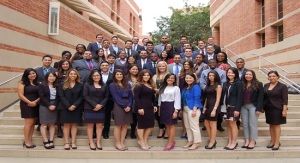By: Frank Roessler
When we talk about founders, we tend to imply an “and” at the end of the title. A founder isn’t just the person who came up with an idea for a new business — we also expect them to be its chief executive, president, or public face. We assume that after an entrepreneur dedicates their time and energy to starting a venture, they’ll want to take the lead on sailing it into profitability. The apparent connection between founder and CEO is so strong that on some level, we even expect the skills that make founders so successful in the earliest days of their businesses to translate seamlessly into their post-founding leadership efforts.
As someone who has been both a founder and president, I can tell you definitively — that assumption is off-base.
There is an enormous difference between founding a company and leading one. The two require entirely different skill sets; to be completely honest, I’m not at all surprised that some entrepreneurs prefer to focus on one area or the other. Those who choose to found and lead a company, as I did, usually have to undergo a difficult transition.
Here’s the issue — when you decide to establish a business, you’re essentially starting on a creative and individually-driven mission. You aren’t responsible for an extensive employee base, you don’t need to manage multiple departments, and you don’t have a company to lose (yet). You have an idea, and if you put in a tremendous amount of effort and maneuvering, you have a shot at bringing it to market as a reality.
As startup culture commentator Michal Bohanes describes the transition in an article for Forbes: “Once a business idea takes root and a company starts growing, the main priority isn’t being an entrepreneur but instead becoming a manager. It’s taking care of the mundanities of running a business: Hiring, managing people, quality control, finance, customer service etc.”
When a business needs a CEO, the entrepreneur’s work as a founder is all but done. They don’t need the individual drive or sheer creativity that pushed them to success as an independent entrepreneur anymore — instead, they need to have the charisma to articulate a vision, the operative skills to build a strong organization, and the strategic business planning abilities to set a course towards success.
I’ll give a personal example. When I started Ashcroft Capital, I did so because I saw an opportunity to create a firm that could take a fiduciary approach to the acquisition and management of multifamily real estate investment opportunities across the United States. It took time, resources, and more than a few sleepless nights, but I managed to make my idea a reality and become a successful founder. By the time that I took on the role as Ashcroft’s president, I thought I had made it through the hardest part of the entrepreneurial process and could rely on the skills I’d honed as a founder to carry me as a company leader.
As it turns out, however, the transition from founder to president was more complex than I had ever anticipated.
You see, it’s all too easy to develop tunnel vision during the founding process. While I was aware during those early stages that I would eventually need to shift into an executive role and act as a team leader, I was more focused on what I had to accomplish as an individual founder to build the firm. As I began to take on more leadership responsibilities, however, I realized that being successful as an entrepreneur-founder and doing well as an entrepreneur-president required two very different and distinct skill sets.
It’s a heck of a transition.
Today, I have the “and” in my title. I currently stand as Ashcroft Capital’s Founder and Managing Partner. Here are a few pointers that might, from my own experience, help other entrepreneurs successfully add the conjunction to theirs.
Live in a Learning Mindset
The shift into executive leadership has a steep learning curve, especially for first-time founders. They need to be humble enough to put their preconceptions about the role and its requirements aside and focus on learning more about what the company needs from them. Listening to industry veterans and advisors is a necessity, especially if a founder doesn’t have prior leadership experience.
Learning to be humble enough to listen and accept suggestions, however, can be difficult for founders. During the entrepreneurial process, being stubborn and overconfident is almost a requirement. A founder’s assurance empowers them to build a business even in the face of criticism and adversity — and then holds them back from being effective leaders after the company is established. Entrepreneurs need to know when to shift gears and let down their founder-era defenses.
As CEO Jeff Booth noted of his own experience with what he calls the arrogance-humility cycle, “It takes overconfidence to stay the course through adversity but a humble mind to evolve and iterate. How, exactly, do you know when it’s the right time for each? The moment where success is knocking down your door and everyone starts telling you that you’re right—that’s the time to get humble, fast.”
Good leaders can’t be intractable founders; if you want to succeed, accept that you don’t have all of the answers and open yourself to learning.
Hire the Best People You Can and Listen to Them
I like to say that it’s easy to lead when the people around you are smart and talented — but you need to be in a position to listen. It can be tempting for founders to micromanage or hover over every business decision or staff action like a parent behind a toddler, worried that a single wrong decision will topple the company. Founders need to hire the best people they can and learn to listen to them. Once they do, they will gain the confidence they need to step back and trust in their team.
Part of this does come back to humility; I knew that I couldn’t bring Ashcroft Capital’s portfolio to stand on sturdy legs by myself, so I brought in the best people I could find in the industry to help me create a thriving company. For example, our director of acquisitions, Scott Lebenhart, came from eleven years of experience working at one of the largest private equity firms in New York City; our asset manager, Alex Raggio, ran a $750 million portfolio before he came to work for us; and every one of our analysts is a top-notch performer. Success in business is a group endeavor. Hire people for their skills, industry knowledge, and ability to work effectively within a team, and then trust that they will surpass your expectations.
Entrepreneurship isn’t for everyone. Building a business takes more time, effort, and resources than most would ever guess — and running one after the building is done demands even more from a founder. But if you have the drive to build and lead a venture, my advice for entrepreneur-founders who want to become entrepreneur-leaders is this: know what your organization needs, then be humble, open-minded, and dedicated enough to provide it.








